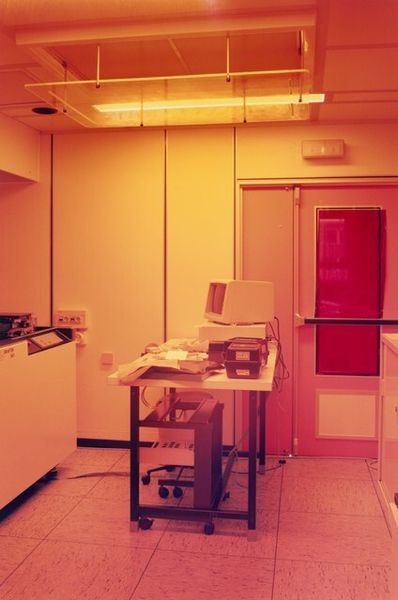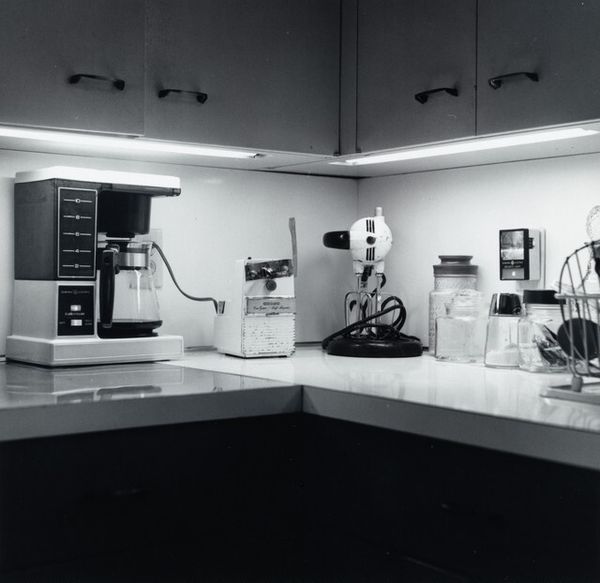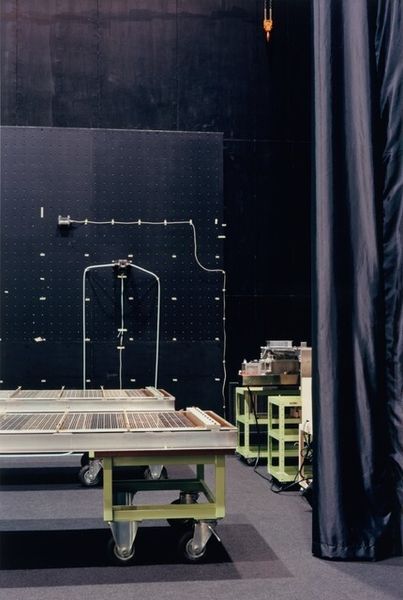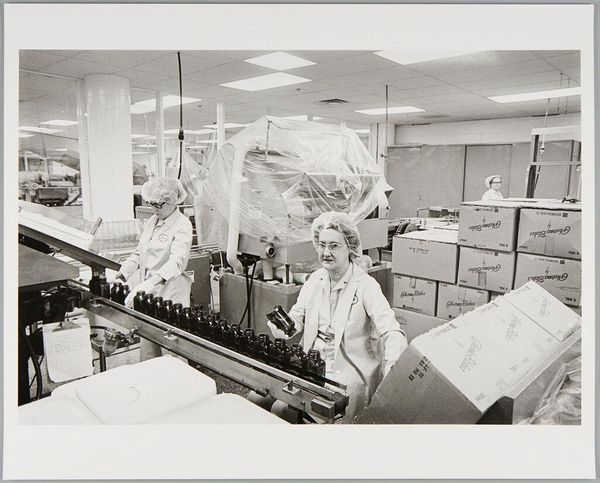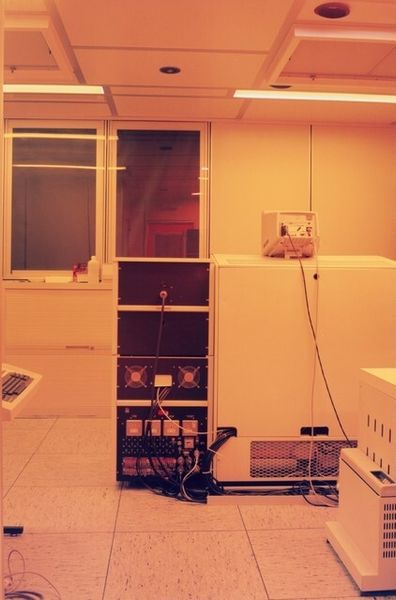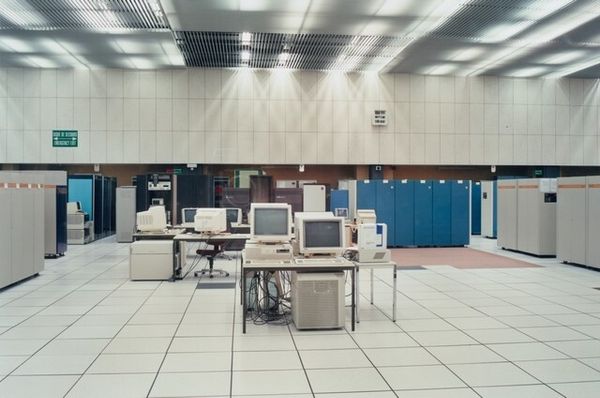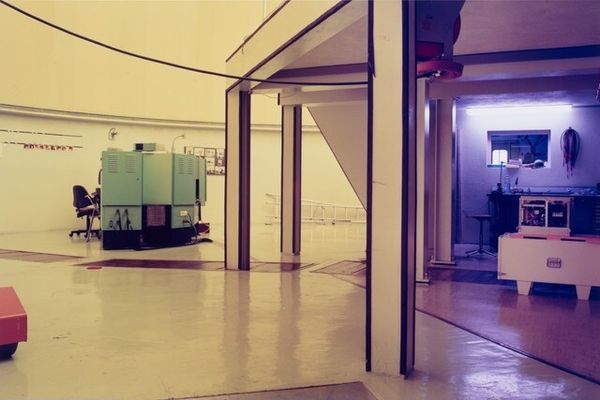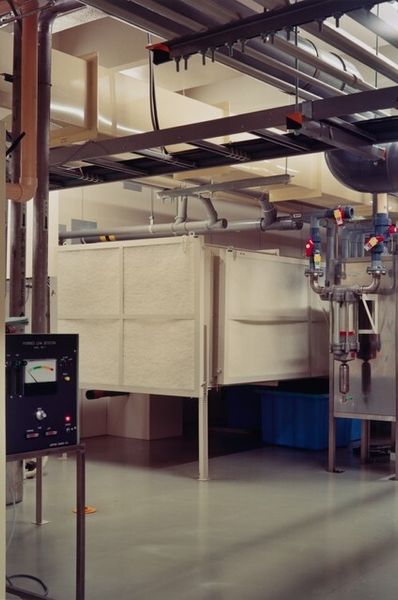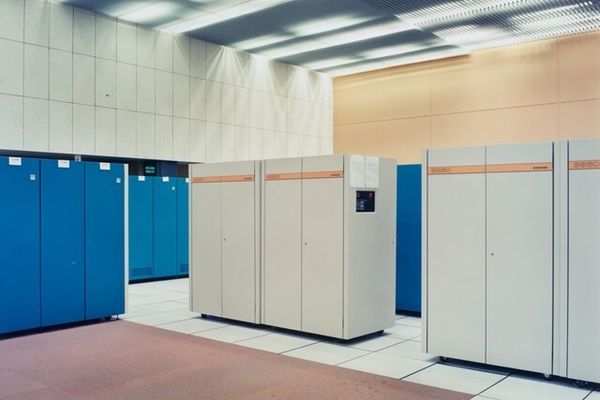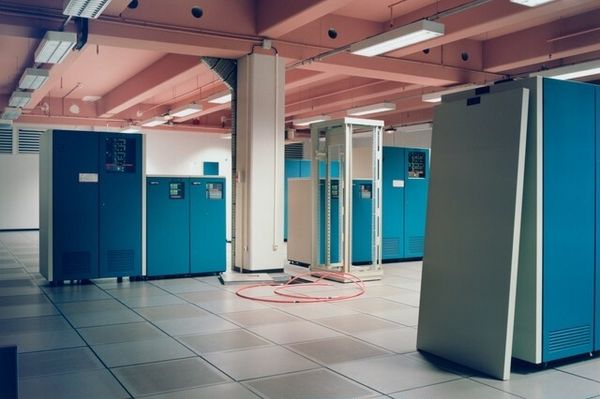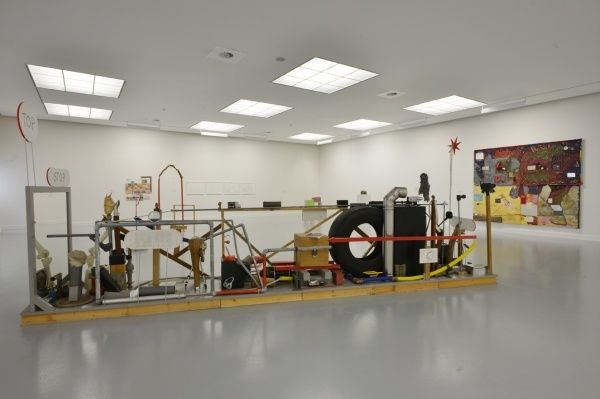
photography
#
photography
#
geometric
#
realism
Dimensions: image: 17.7 × 26.5 cm (6 15/16 × 10 7/16 in.) sheet: 28 × 35.5 cm (11 × 14 in.)
Copyright: National Gallery of Art: CC0 1.0
Curator: Lewis Baltz created "Office, Mitsubishi, Vitre, France" sometime between 1989 and 2006. The photograph depicts a nondescript office space. What strikes you initially? Editor: The overwhelming emptiness. It's almost clinical, with those pale walls and intensely reflective floor. The geometric pattern of the ceiling lights reinforces this sense of cold order. Curator: That sense of detachment is central to Baltz’s exploration of late capitalism and the built environment. His photographs often scrutinize corporate spaces and their impact on human lives, particularly regarding labor. Editor: Yes, the figures feel dwarfed by the architecture and technological trappings; almost like they are cogs in some vast, indifferent machine. I think this speaks volumes. How do the principles of realism play into that reading? Curator: Baltz’s realism is quite strategic. It doesn’t offer romanticized images, as its frank portrayal shows the world exactly as it appears, subtly drawing out critical aspects through the absence of obvious editorializing. It invites the viewer to observe and dissect. How does the visual balance affect the perception? Editor: There is a deliberate compositional balance, but also an inherent asymmetry. The cabinet and open doorway pull the eye from left to right, creating a visual tension. Curator: Precisely. That visual push-pull can represent the socio-economic pressures of globalization, playing with the boundaries between presence and absence in corporate settings and broader social realities. Editor: Looking at it through a formalist lens reveals that the stark lighting almost flattens the space, adding to that oppressive atmosphere. Curator: True, the cold artificial illumination and shiny surfaces also contribute to the feeling of alienation and the potential consequences of industrial advancement. What can we, as modern audiences, learn? Editor: For me, the picture reflects on what Baudrillard termed the simulacra, of how reality can become subsumed in signs, devoid of underlying references. Its austerity makes me rethink every day workspaces. Curator: This resonates with contemporary issues, too—digital surveillance, the gig economy, the diminishing lines between work and life. The work offers us an historical perspective of the intersectionality of global commerce and societal labor forces. Editor: I see what you mean. What struck me initially as cold geometry now speaks volumes. Curator: Exactly; Baltz encourages us to look beyond the surface, think critically, and consider the world in which we participate.
Comments
No comments
Be the first to comment and join the conversation on the ultimate creative platform.
